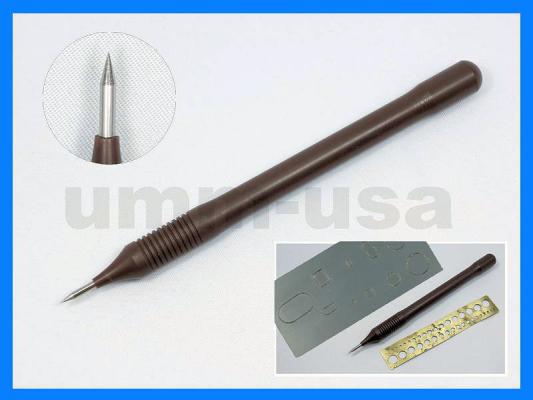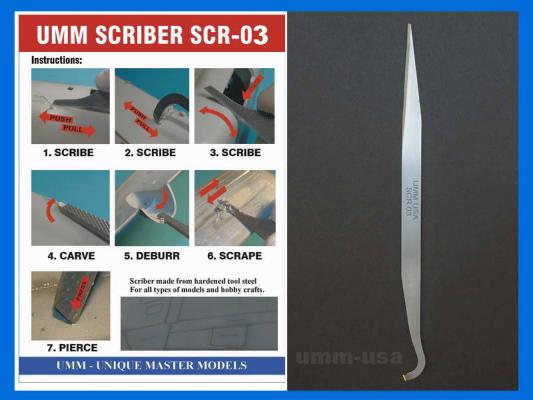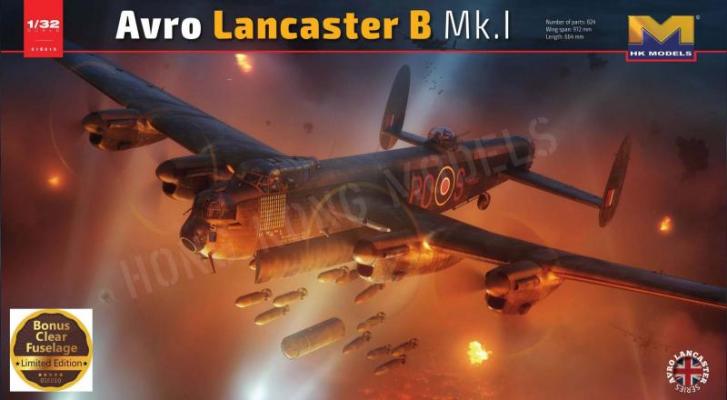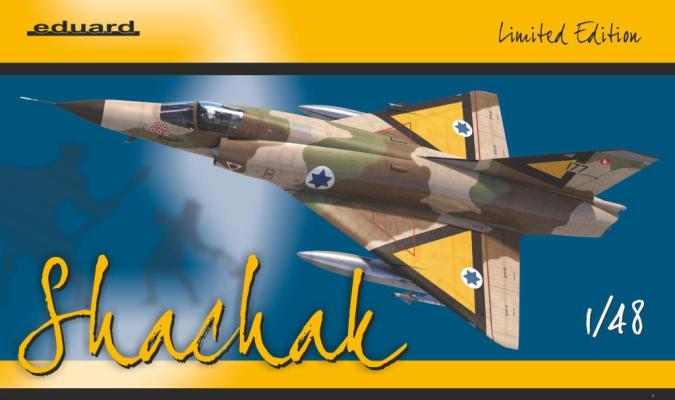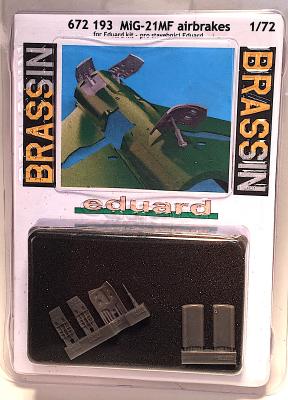UMM USA has come to modelers rescue with another excellent tool, this time, the Micro Template Scriber. As the name describes, this tool is used to scribe using templates to replicate specific shapes being added to a model or to fix what was lost sanding and filling. Modelers have used many things in the past to do this same task- needles, line engravers, etc., and each has their drawbacks. UMM has produced a Template Scriber designed to fix these problems. The engraving tip is hardened tool steel to make sure the edge stays crisp. It is very fine and will glide around the interior of the template. Very importantly, the handle is ergonomically designed and has a grip to avoid slipping and allow even pressure to keep lines consistent.
Welcome to the IPMS/USA Reviews site!
Introduction: The primary organization of the IPMS/USA Review website is by IPMS/USA National Contest Class. Within each Class there are sub-menus by kits, decals, books, etc. The Miscellaneous Class is for items that are not class specific or that cross two or more classes.
IPMS/USA Members: We encourage you to submit reviews, both here and to the Journal. To volunteer for membership in the IPMS/USA "Reviewers Corps" and submit your own reviews, please read the Guidelines For Submitting Product Reviews.
Manufacturers, publishers, and other industry members: IPMS/USA is pleased to offer your company the opportunity for product reviews. All product reviews are performed by IPMS/USA members, and are posted in the publicly-accessible section of our website. With very few exceptions, we perform full build reviews of new kit releases, aftermarket products, and supplies. If you would care to provide product samples for review, please contact John Noack, IPMS/USA 1st VP.
To learn more about IPMS/USA, please see our About Us page.
I have been using UMM scribers for quite a while now. I use it for scraping seams and engraving panels lines eradicated by sanding and filling. Its design is multipurpose, and I love it. That was the SCR-01 original scriber. Since that came out, Jon has come out with an SCR-02 and now, an SCR-03 version. The newest version is longer and thinner than the originals providing even better access to tight corners.
The part itself is manufactured from hardened tool steel and has a matte finish. One end is a sharpened hook for scribing panel lines and the other end is a flat blade which also has an edge to it. Overall length is 5.5 inches which is comfortable to hold in your hands and makes it very maneuverable even with my small hands.
The UMM web site listed above lists its possible uses as scribing panel lines with push and pull techniques, removing pin marks, trimming flash, trimming stretched sprue, deburring, piercing, scrapping, carving etc.
Down the home stretch! Last time we had just completed the wings, tail, fuselage, nose and wheel-wells, leaving just the final assembly and finish for the last segment of this three-part review. To recall: I chose to display only the port wing’s inboard engine detail, and to cover up the remaining three engines. Otherwise, the aircraft is built up from the box with the exceptions of a set of brass gun barrels, and a set resin control panels and accompanying decals. The brass barrels will be part of a separate IPMS review.
The Eduard Mirage IIIC is a well-known kit, first released in the mid-2000s. Despite being 15-yr old molds, they hold well the pass of time and it is nice to see it re-released. It sure builds into a nice replica of the French interceptor.
The kit comes molded in light grey plastic, with a total of 167 parts in 8 sprues, plus a small sprue of clear parts. The decals are printed by Eduard, they are opaque, shiny and in register. This boxing also includes pre-painted photoetch and pre-cut masks. As an add-on, this kit also includes resin parts for the upgraded airframes which used the ATAR 9C engine.
This set is designed to be used on Eduard’s MiG-21MF kits that were released last fall. The set consists of 6 resin parts – the two forward speed brakes, the large rear speed brake, two inserts for the forward speed brake bays, and the actuator for the rear speed brake.
The rear speed brake and actuator are one for one replacements for the kit parts and offer nicely refined detail over the kit parts.











